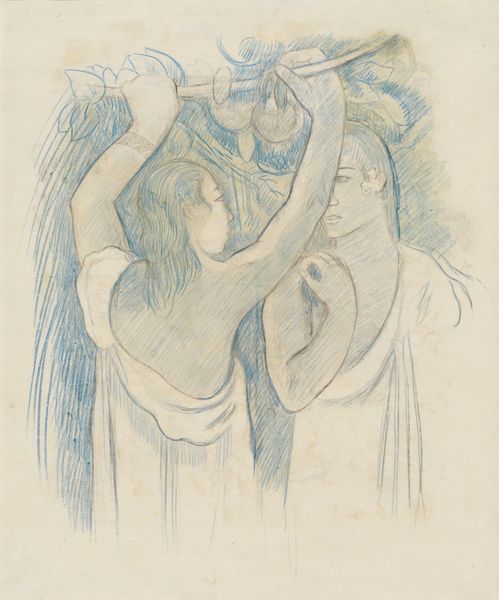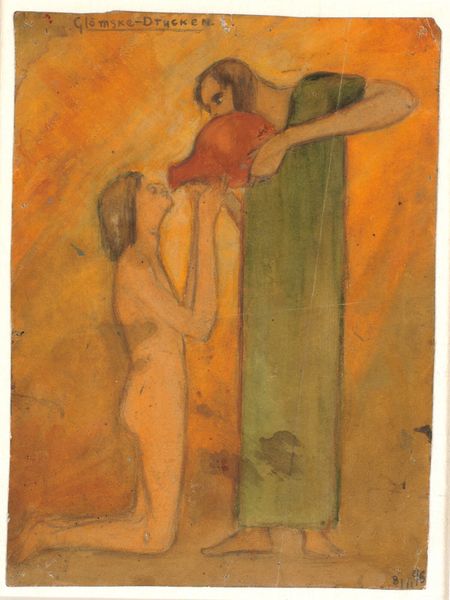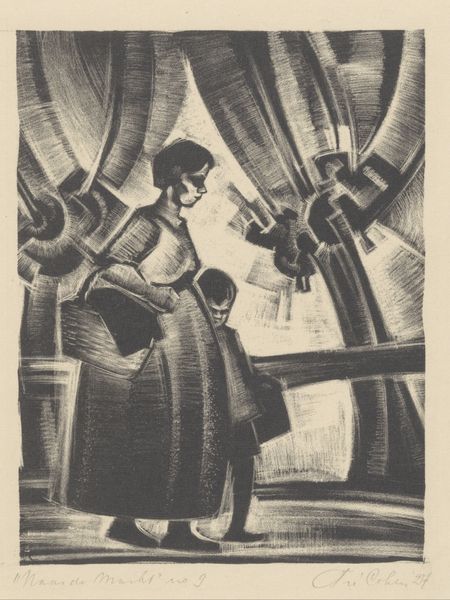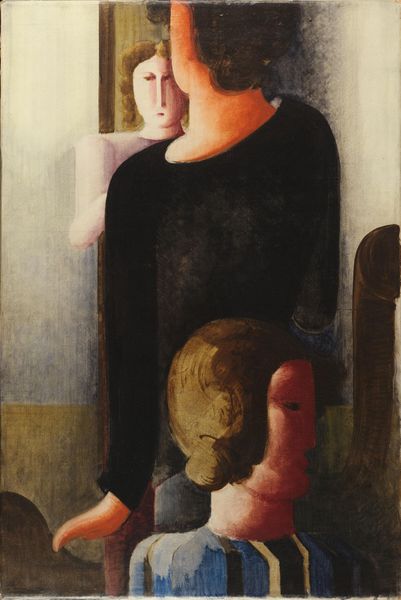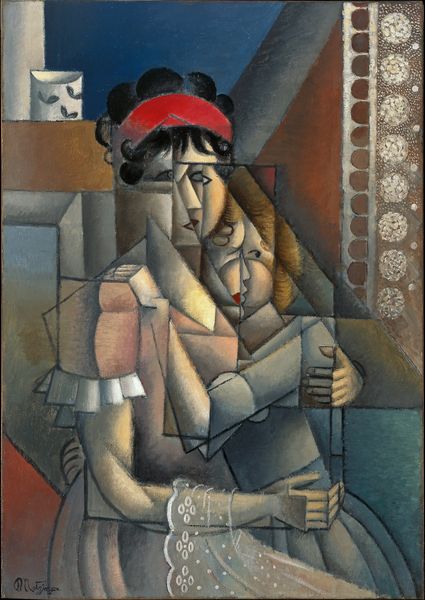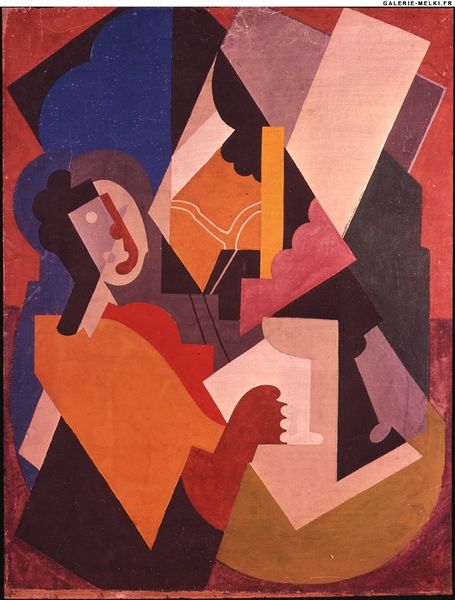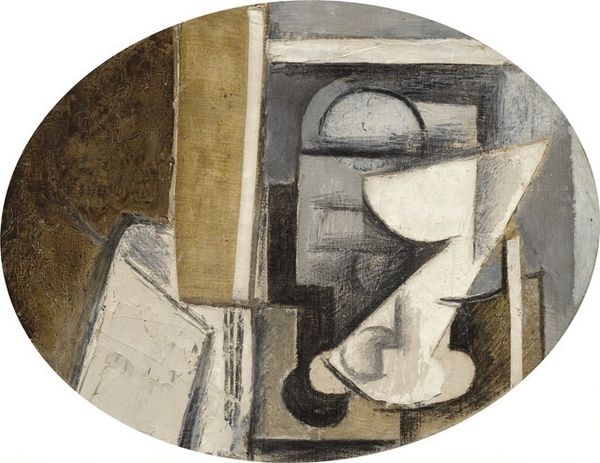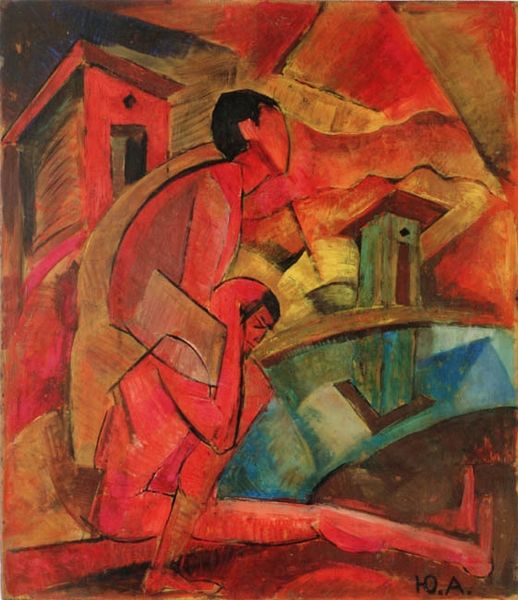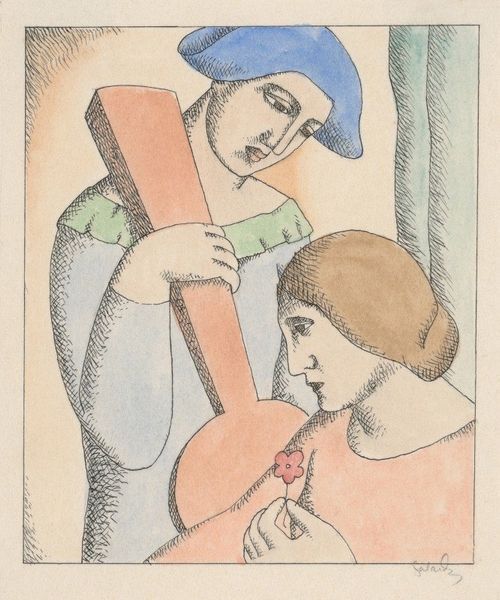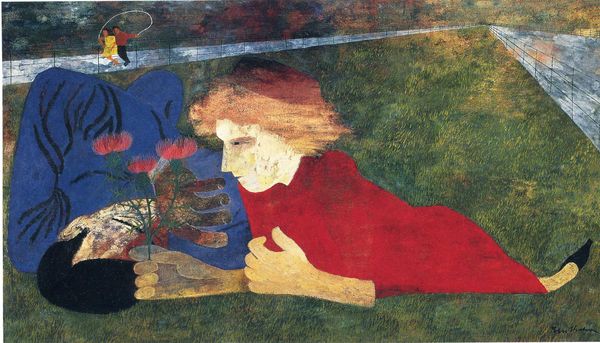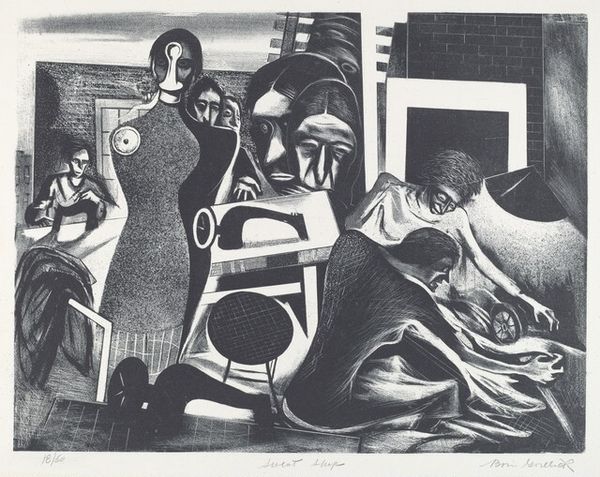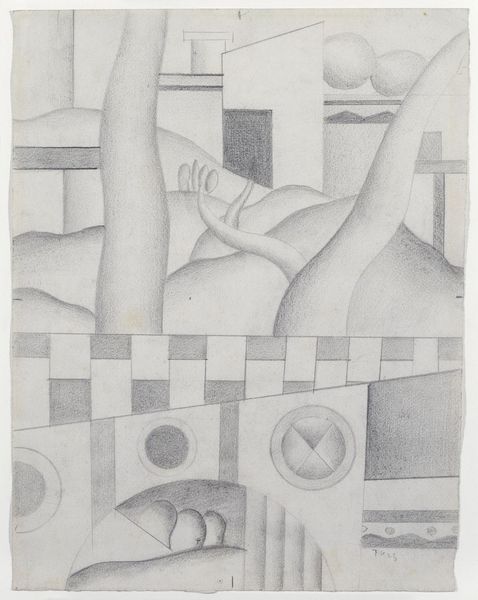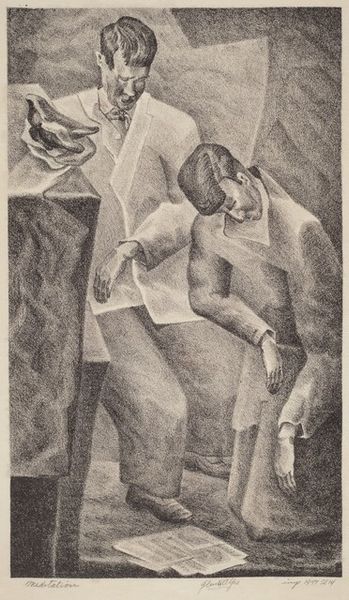
Copyright: Public Domain
Editor: So, this is "Sedentary Group" by Oskar Schlemmer, created in 1942. It's watercolor, possibly with some pastel chalk, and depicts several figures in a rather ambiguous setting. I find the subdued colors and the somewhat geometric rendering of the figures create a strangely unsettling mood. What strikes you when you look at it? Curator: I'm particularly interested in how Schlemmer employed materials available to him during a tumultuous time. The choice of watercolor and potentially pastel, both relatively accessible and perhaps "lesser" materials than oil, speaks to a resourcefulness. Consider, also, how these materials allowed for a layering effect. Look at the apparent underpainting—what do you think that tells us about the artist's process and available means? Editor: I see what you mean. Using watercolor, especially then, perhaps reflects certain limitations? Curator: Precisely! Furthermore, think about the implications of calling this a "group" while presenting such distanced, almost alienated figures. It makes one consider what means of production and artistic output are available but, conversely, what freedoms are being consumed or suppressed during the making of the art. Editor: It's fascinating to consider how the socio-political situation might influence something as fundamental as material choices and figure rendering. It definitely reframes the piece in my mind. Curator: And consider the "craft" versus "high art" arguments. Schlemmer, known for his Bauhaus leanings, challenges these rigid distinctions, even blurring them within the constraints presented by a context of conflict. He questions the norms of the studio through his work with available materials and methods. What does it say, then, about the value assigned to the making of art during such social unrest? Editor: I suppose it forces us to consider the act of creation itself, the labor involved, and the subtle resistance possibly embedded within the artwork's very existence. Curator: Precisely. It underlines that what we perceive is inextricably linked to its mode of production, making apparent the value judgements we constantly make about art, especially as commodities within particular historical circumstances.
Comments
stadelmuseum about 2 years ago
⋮
Even in the face of ongoing defamation by the Nazis, Schlemmer stuck to his all-decisive principle: 'the simple state of the figure, … its silent to and fro in space' (diary, 18 Jan. 1936). This idea also informs the ‘Sedentary Group’ with its relatively subdued palette. To obtain that effect, Schlemmer dabbed the diluted oils on the smooth oil paper with a brush and a sponge. Light and shade come about through the density of the paint’s diffuse, cloudy-looking application.
Join the conversation
Join millions of artists and users on Artera today and experience the ultimate creative platform.
